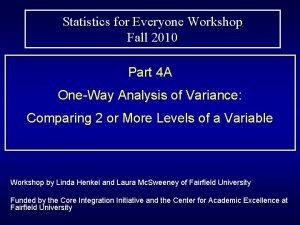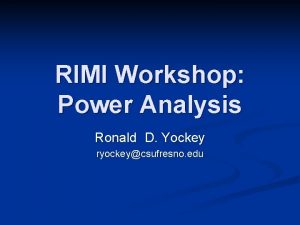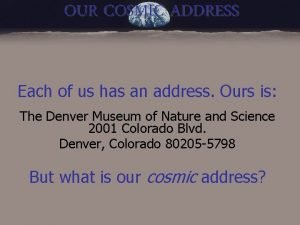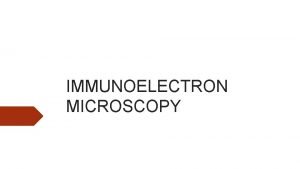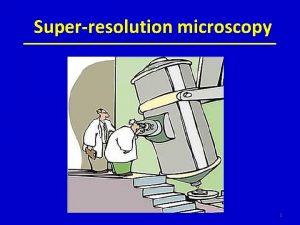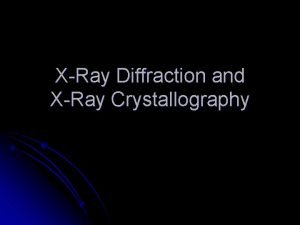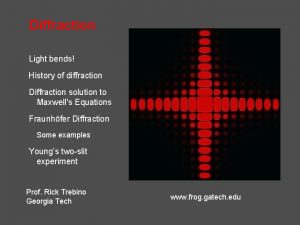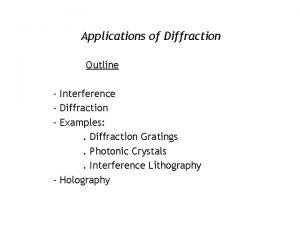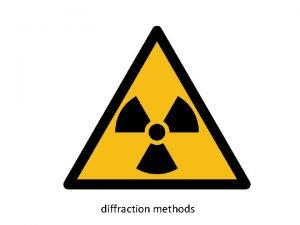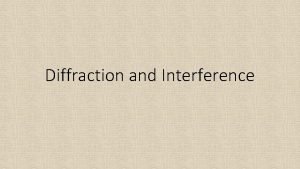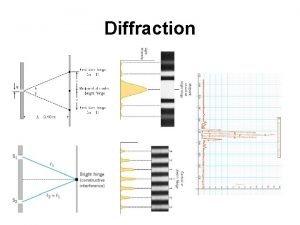Microscopy versus Diffraction Large Features Small Features Real









- Slides: 9

Microscopy versus Diffraction Large Features ( » ) Small Features ( ) Real Space: x Reciprocal Space: kx = 2 / x Single Object Ordered Array Mon. Feb 26, 2006 Phy 107 Lecture 15 1

Real space versus reciprocal space kx = 2 / x x = row spacing kx rows y ky Mon. Feb 26, 2006 Real space: x, y, z Reciprocal space: kx, ky, kz Phy 107 Lecture 15 2

Test patterns for simulating diffraction from DNA Single helix Mon. Feb 26, 2006 Double helix Phy 107 Lecture 15 3

Rosalind Franklin’s x-ray diffraction pattern of DNA, which led to the double-helix model (Linus Pauling’s copy) Mon. Feb 26, 2006 Phy 107 Lecture 15 4

X-ray diffraction pattern of DNA Diffraction pattern The double helix of DNA 2 b 2 p p b p = period of one turn b = base pair spacing = slope of the helix Mon. Feb 26, 2006 Phy 107 Lecture 15 5

X-ray diffraction image of the protein myoglobin • This image contains about 3000 diffraction spots. All that information is needed to determine the positions of thousands of atoms in myoglobin. • Protein crystallography has become essential for biochemistry, because the structure of a protein determines its function. Mon. Feb 26, 2006 Phy 107 Lecture 15 6

Real space versus reciprocal space • Diffraction patterns live in reciprocal space, which corresponds to the projection screen. A direction of a beam in real space becomes a point on the screen in reciprocal space. • Everything is backwards in reciprocal space: A large distance x in real space becomes a small k-vector kx in reciprocal space and vice versa. • Even physicists have a hard time thinking in reciprocal space. But it is used widely for characterizing waves, particularly electron waves in solids and nanostructures. Mon. Feb 26, 2006 Phy 107 Lecture 15 7

Low Energy Electron Diffraction (LEED) at surfaces K= 2 /d k = 2 /D D d Mon. Feb 26, 2006 1 D chain structure Phy 107 Lecture 15 2 D planar structure 8

Neutron Diffraction: Small Angle Neutron Scattering (SANS) Good for light elements (hydrogen, deuterium, polymers) and for magnetic materials (magnetic moment of the neutron). a Rg P Model of a polymer: Rg = radius of gyration a persistence length Mon. Lecture Feb 26, 2006 (see 2 on length scales) Q 1/2 1/Rg Q Phy 107 Lecture 15 Diffracted neutron intensity P plotted versus the k-vector Q 9





